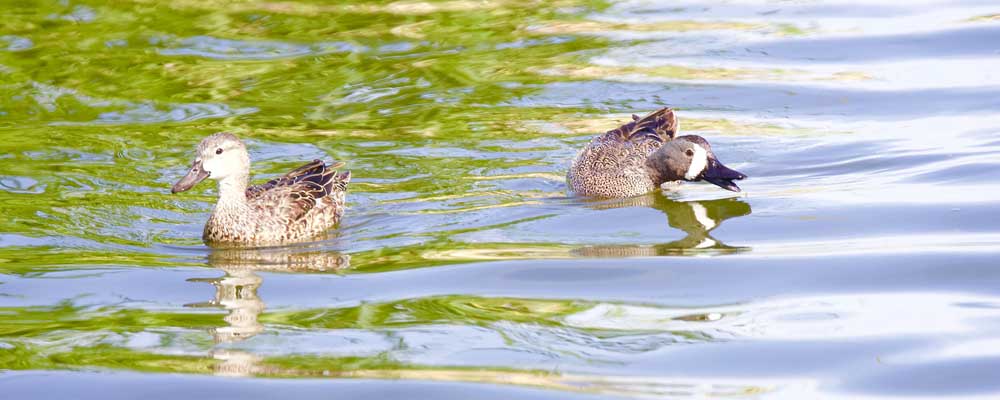Birding: A nature vacation on the Baja Peninsula
Published 10:01 am Thursday, February 9, 2023

- Blue-winged teal: One of the three species of teal seen here and in Baja.
As of Feb. 11, I will be in Mexico’s Baja, California, to study whales and birds for the third time in my life. I cannot seem to get enough of the whales and birds of Baja.
Trending
The gray whales that migrate off our coast in the spring and fall are the ones I will be studying and photographing. The gray whale nursing lagoons in Guerrero Negro will be one of the tour’s destinations. We will board a boat and work our way to where the whales are located. Mothers will already have given birth and surprisingly will bring their newborn calves up to some of the small boats or at least nearby where passengers can see them closeup and maybe enjoy gently stroking a calf that comes along side of their boat. The calves love it. They return time and time again for more. The whales will often swim under the boat and be close enough to the surface for a good look at them.
I hope to see and photograph whales spy hopping, tail slapping and engaging in other behaviors. The plan is also to go out into the Sea of Cortez to search for gargantuan wintering blue whales. These whales are the largest animal ever known to have existed. Scientists have determined that the maximum length that a blue whale ever reached is about 98 feet and weight wise it can weigh up to 199 tonnes. It is also likely that large pods of bow-riding dolphins will be seen.
In addition, the bird life will be a high priority. Many of the species we see here on the Peninsula can also be seen in the Baja and some species that breed here, winter in Mexico. Nesting osprey are habituated to the San Ignacio Lagoon area where they nest in large numbers. A planned visit here will provide a great opportunity to capture photos of osprey in flight, carrying nesting material or fish in the specialized feet for transporting a wriggling fish.
Trending
I have yet to see brant on Willapa Bay, but I know I will see them in Baja. Waterfowl abound in the ponds. All three species of teal, blue-winged, green winged and cinnamon are likely. Greater-white fronted geese and cackling geese are likely as well.
Great blue herons, great egrets, and brown pelicans are sure to be observed. The beauty and enjoyment are in their appearance and gracefulness, but they also seem to pose for photos especially when on the hunt for tasty meals.
I hope to experience this big time. Other birds we see in the Baja that we also see here include turkey vultures. In fact, one of the hotels we will stay in for a few nights is adjacent to one of the largest turkey vulture roosts I have ever seen.
They fly in in large numbers to roost in the trees as dusk begins settling in for the night. It is quite a sight to see.
Other common birds we see on the peninsula are also seen in Baja. White-crowned sparrows, American coots, blue-winged teal, and black phoebes are common in Baja too.
It is always exciting to see new species (lifers!). Xantus’s hummingbird, for example, is endemic to Baja California. It is tiny at 3.5 inches in size, which is smaller than our Anna’s or rufous hummingbirds. My first time seeing a Costa’s hummingbird was in Baja. An adult male sports a purple or amethyst throat and crown. Its gorget feathers project outward at the sides and toward the back of the bird. They are quite noticeable and beautiful.
Besides the whales and the birds, I am looking forward to a little warmth. I hear that the temps might be in the mid to high 70s F when I am there. While the birding is grand in the Baja, there is no place I’d rather be birding than here on the Long Beach Peninsula.









